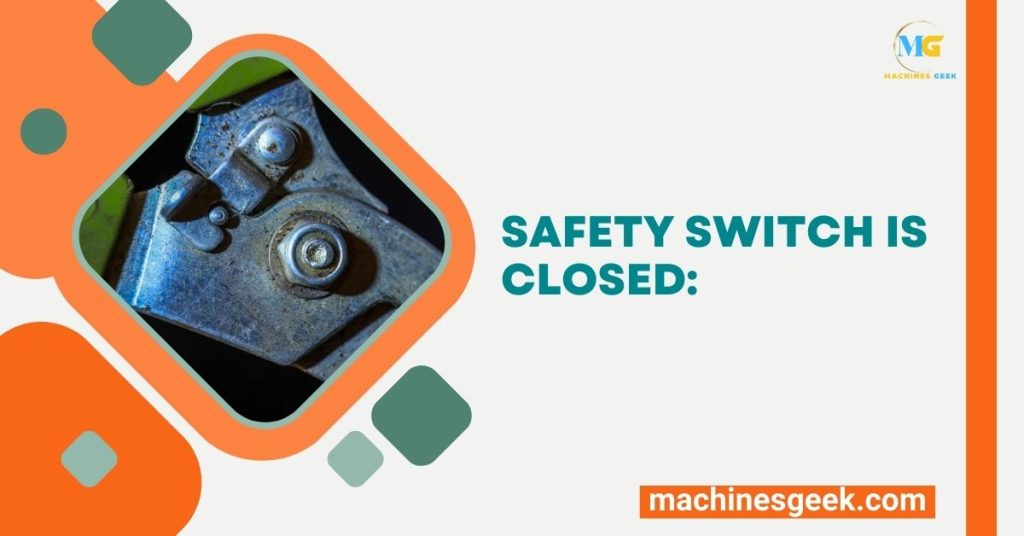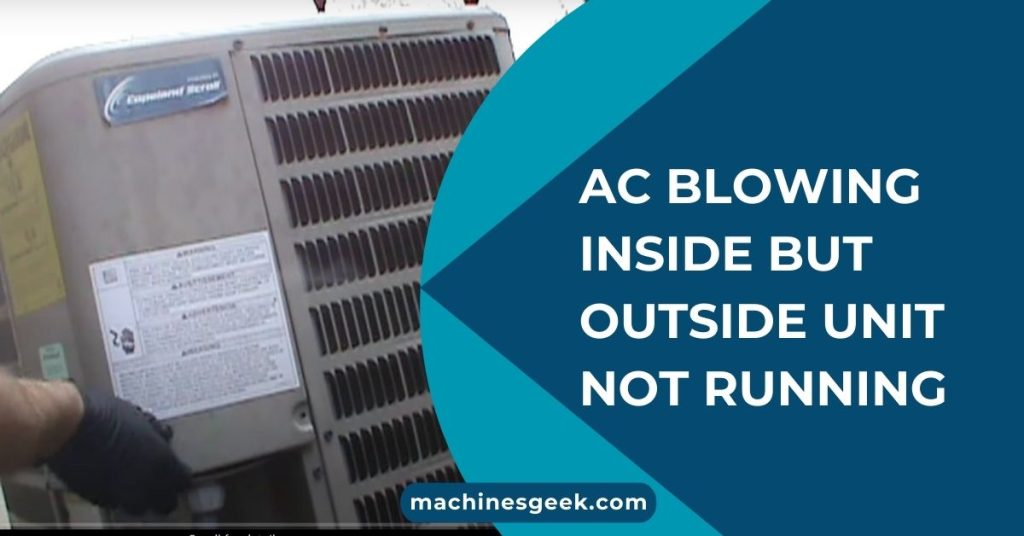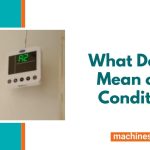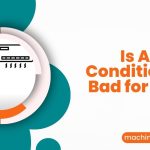When the outside AC unit is not running but the inside unit is, it could be due to a power issue. Check the circuit box in your home to ensure the breaker for the outside unit hasn’t tripped.
If it has, turn it off and then back on. If the breaker keeps tripping, consult a licensed electrician for further assistance. Additionally, it could be a problem with the compressor in the outside unit.
Possible Causes For Outside Unit Not Running
There can be several possible causes for the outside unit not running. One common reason is a tripped circuit breaker in the home. If the breaker has tripped, it is important to turn it all the way off and then flip it back on. If this happens repeatedly, it is recommended to consult a licensed electrician to determine the cause of the tripping.
Another possible cause is a faulty power supply. In such cases, it may be necessary to check the power supply to the outside unit and ensure it is functioning properly.
A bad capacitor can also lead to the outside unit not running. It is important to check the capacitor and replace it if necessary.
Issues with the contacts on the contactor or a bad contactor coil can also prevent the outside unit from running. These components should be inspected and replaced if needed.
Other potential causes include an opened low-pressure sensor, a bad thermostat connection from the indoor to the outdoor unit, a condensate safety switch that has opened, problems with the thermostat wiring, low voltage fuse, or the thermostat itself.
Troubleshooting Steps For Outside Unit Not Running
Make sure the breaker for the outside unit hasn’t tripped. If it has, turn it all the way off, then flip it back on. If this happens more than once, you’ll want a licensed electrician to determine why the breaker keeps tripping. This could be a fire or safety hazard in the making.
Check the circuit box in your home and reset the breaker if necessary:
Inspect the power supply for any issues:
Ensure there are no visible issues with the power supply that may be causing the outside unit not to run.
Examine the capacitor for signs of damage or failure:
Check the capacitor for any bulging, leaking, or other signs of damage. A faulty capacitor can prevent the outside unit from running.
Verify the status of contacts on the contactor:
Check the contactor for any signs of wear or damage. Ensure that the contacts are clean and make proper contact.
Test the contactor coil for functionality:
Use a multimeter to test the coil in the contactor. If the coil is faulty, it may need to be replaced.
Check the low-pressure sensor for any malfunctions:
Inspect the low-pressure sensor for any issues. A faulty sensor may need to be replaced.
Ensure a proper thermostat connection between the indoor and outdoor units:
Check the wiring and connections between the thermostat and the outdoor unit. Make sure everything is properly connected and functioning.
Confirm the condensate safety switch is closed:

Check the condensate safety switch to ensure it is closed. If it is open, the outside unit may not run.
Inspect the thermostat wiring, low voltage fuse, and thermostat itself for any problems:
Examine the wiring, fuse, and thermostat for any issues. Make sure all components are in good condition and functioning correctly.
Additional Tips For AC Units Not Turning On
When your AC is blowing inside but the outside unit is not running, there are a few additional tips you can follow to troubleshoot the issue.
First, always disconnect the power before working on the unit to ensure safety.
Check the dual run capacitor and its micro-farad rating (UF) as a faulty capacitor can prevent the outside unit from turning on.
Perform a leak check and use a leak detector if necessary, as refrigerant leaks can also cause the unit to not run.
Inspect the valve core for any issues, such as a clogged or faulty valve, as this can affect the unit’s operation.
Lastly, consider the possibility of a faulty air conditioner compressor, which may need professional repair or replacement.
Can Outdoor AC Unit Fan Not Spinning Cause the Inside AC to Blow Air?
Yes, troubleshooting outdoor AC fan spin is crucial. If the outdoor AC unit fan is not spinning, it can impede the heat exchange process, leading to the inside AC blowing warm air. This issue can be caused by a faulty motor, electrical issues, or debris accumulation, requiring immediate attention from a professional technician.
Frequently Asked Questions
Why Is My AC Unit Working Inside But Not Outside?
If your AC unit is working inside but not outside, check your circuit box to ensure that the breaker for the outside unit hasn’t tripped. Reset it by flipping it off and then back on. If this keeps happening, consult a licensed electrician to identify the cause.
How Do You Reset The Outside AC Unit?
To reset the outside AC unit, locate the reset switch, usually a small, red button on the outdoor unit. If you can’t find it, refer to the manufacturer’s manual. Press the red button for three seconds and release.
What Would Cause The AC Unit Not To Kick On?
The AC unit may not kick on due to a tripped circuit breaker or a reset issue with the thermostat. Check the circuit box for any tripped breakers and reset them if needed. Sometimes using too many appliances at once or power surges after a storm can trip the breaker.
Why Is The AC Unit Not Running Outside?
The outside unit may not be running due to a power supply problem, a bad capacitor, or an issue with the contacts on the contactor. It could also be caused by a bad contactor coil, an opened low-pressure sensor, or a bad thermostat connection from the indoor unit to the outdoor unit.
Conclusion
If your AC unit is blowing inside but the outside unit is not running, there could be several possible issues causing this. It could be a power supply problem, a bad capacitor, faulty contacts on the contactor, a bad contactor coil, an opened low-pressure sensor, or a bad thermostat connection.
Other potential causes include a tripped circuit breaker, a faulty thermostat, or a condensate safety switch that has opened. It’s important to have a licensed electrician or HVAC professional diagnose and fix the problem to ensure the safety and proper functioning of your AC unit.








